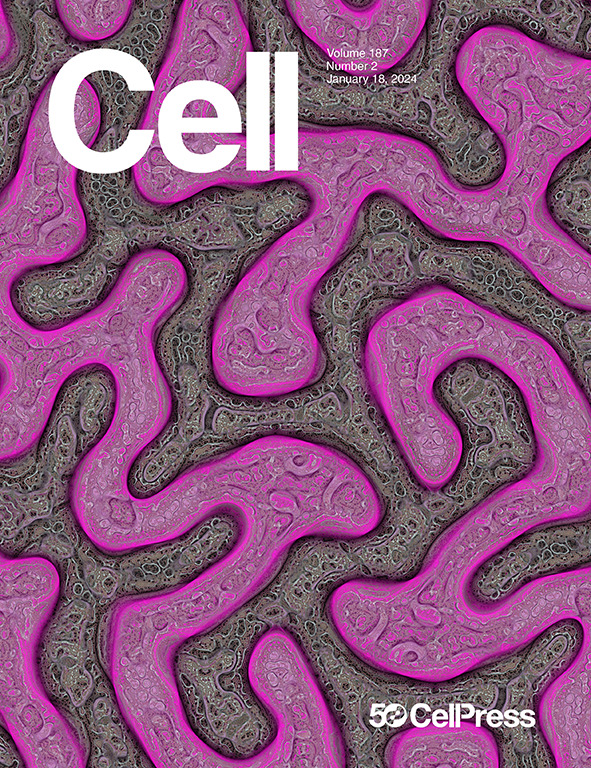人体血管类器官发育过程中的命运和状态转换
IF 45.5
1区 生物学
Q1 BIOCHEMISTRY & MOLECULAR BIOLOGY
引用次数: 0
摘要
人类血管类器官(hBVOs)已成为模拟人类血管发育和疾病的系统。在这里,我们使用单细胞多组学以及遗传和信号通路扰动来重建hBVO的发育。中胚层祖细胞在体外分化为内皮细胞和壁祖细胞,异种移植的bvo获得明确的动静脉内皮细胞规格。我们推断了一个基因调控网络,并使用单细胞遗传扰动来鉴定参与细胞命运规范的转录因子(TFs)和受体,包括MECOM在内皮和壁规范中的作用。我们评估了BVOs产生器官型状态的潜力,确定了hBVOs中缺乏表达的tf,并发现诱导的LEF1过表达增加了脑血管特异性。最后,我们将血管疾病相关基因映射到hBVO细胞状态,并分析了糖尿病的hBVO模型。总之,我们提供了hBVO发育的全面细胞状态图谱,并阐明了hBVO在转化研究中的作用和局限性。本文章由计算机程序翻译,如有差异,请以英文原文为准。

Fate and state transitions during human blood vessel organoid development
Human blood vessel organoids (hBVOs) have emerged as a system to model human vascular development and disease. Here, we use single-cell multi-omics together with genetic and signaling pathway perturbations to reconstruct hBVO development. Mesodermal progenitors bifurcate into endothelial and mural fates in vitro, and xenografted BVOs acquire definitive arteriovenous endothelial cell specification. We infer a gene regulatory network and use single-cell genetic perturbations to identify transcription factors (TFs) and receptors involved in cell fate specification, including a role for MECOM in endothelial and mural specification. We assess the potential of BVOs to generate organotypic states, identify TFs lacking expression in hBVOs, and find that induced LEF1 overexpression increases brain vasculature specificity. Finally, we map vascular disease-associated genes to hBVO cell states and analyze an hBVO model of diabetes. Altogether, we provide a comprehensive cell state atlas of hBVO development and illuminate the power and limitation of hBVOs for translational research.
求助全文
通过发布文献求助,成功后即可免费获取论文全文。
去求助
来源期刊

Cell
生物-生化与分子生物学
CiteScore
110.00
自引率
0.80%
发文量
396
审稿时长
2 months
期刊介绍:
Cells is an international, peer-reviewed, open access journal that focuses on cell biology, molecular biology, and biophysics. It is affiliated with several societies, including the Spanish Society for Biochemistry and Molecular Biology (SEBBM), Nordic Autophagy Society (NAS), Spanish Society of Hematology and Hemotherapy (SEHH), and Society for Regenerative Medicine (Russian Federation) (RPO).
The journal publishes research findings of significant importance in various areas of experimental biology, such as cell biology, molecular biology, neuroscience, immunology, virology, microbiology, cancer, human genetics, systems biology, signaling, and disease mechanisms and therapeutics. The primary criterion for considering papers is whether the results contribute to significant conceptual advances or raise thought-provoking questions and hypotheses related to interesting and important biological inquiries.
In addition to primary research articles presented in four formats, Cells also features review and opinion articles in its "leading edge" section, discussing recent research advancements and topics of interest to its wide readership.
 求助内容:
求助内容: 应助结果提醒方式:
应助结果提醒方式:


